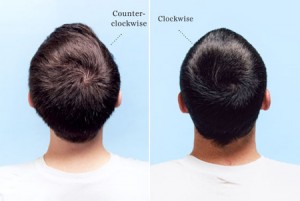Props 3–6. If you’re a gay man, chances are your index finger is longer than your ring finger, while if you’re a lesbian, odds are your index finger is shorter than your ring finger—ratios that reverse the norm for heterosexual men and women. The “whorl” of your hair around a central point on your skull could reveal your sexual orientation—clockwise if you’re straight,  counterclockwise if you’re gay. You’re more likely to be left-handed if you’re gay than if you’re straight. And even your fingerprints can give you away: those of gay men tend to resemble those of straight women with respect to the density of ridges on the thumb and pinky. (Source: New York, 6/17/07.) While trivial in themselves, these odd correspondences with traits that clearly are genetic are interesting precisely because they’re so specific—and so seemingly unrelated to sexual orientation. Wouldn’t you know, gay people are more likely to be left-handed and have a counterclockwise hair whorl? Perhaps, as some have hypothesized, there really is some underlying blip in the gender continuum that gives rise to a variant (dare I say queer?) configuration of traits of which sexual orientation is only one manifestation.
counterclockwise if you’re gay. You’re more likely to be left-handed if you’re gay than if you’re straight. And even your fingerprints can give you away: those of gay men tend to resemble those of straight women with respect to the density of ridges on the thumb and pinky. (Source: New York, 6/17/07.) While trivial in themselves, these odd correspondences with traits that clearly are genetic are interesting precisely because they’re so specific—and so seemingly unrelated to sexual orientation. Wouldn’t you know, gay people are more likely to be left-handed and have a counterclockwise hair whorl? Perhaps, as some have hypothesized, there really is some underlying blip in the gender continuum that gives rise to a variant (dare I say queer?) configuration of traits of which sexual orientation is only one manifestation.





